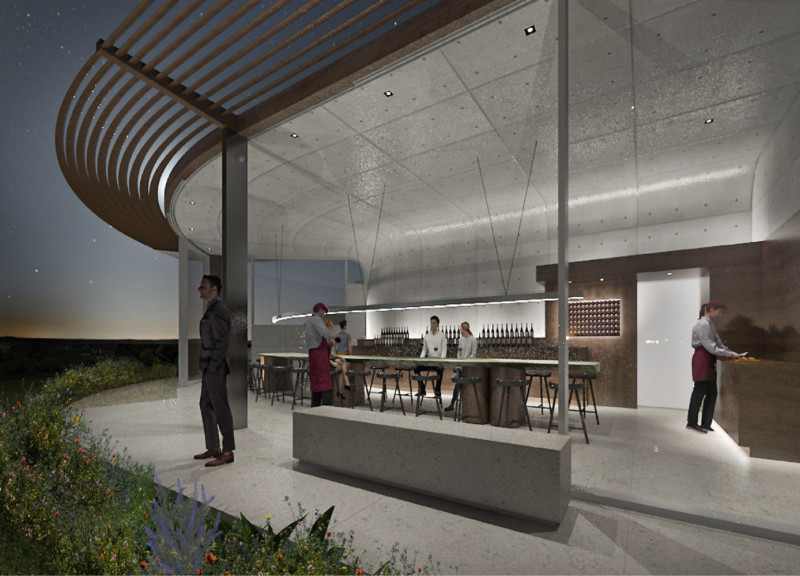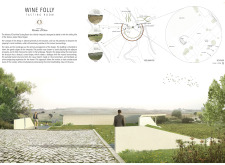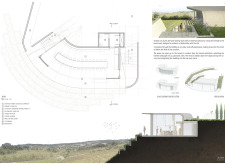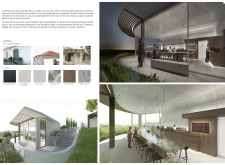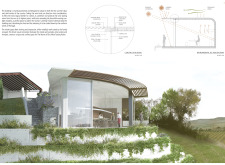5 key facts about this project
The core function of the Monte d’Oiro Wine Tasting Room is to serve as a communal gathering space for wine enthusiasts. This facility serves not only to showcase the wines produced on-site but also acts as a venue for social interaction and cultural exchange, reinforcing the communal nature of wine tasting. By prioritizing visitor experience, the design allows for multiple configurations of space that cater to various group sizes and events, promoting an inclusive atmosphere where people can enjoy both the wine and the scenic views.
The architectural design of the tasting room is marked by several significant elements. The building features a partially buried form that minimizes its visual footprint, effectively immersing it in the natural landscape. This approach not only respects the integrity of the environment but also elevates the overall experience by allowing unobstructed views of the vineyards and hills beyond. The choice of materials further emphasizes this relationship; local limestone, reinforced concrete, tinted oak, and marble are thoughtfully incorporated, reflecting both the region's cultural heritage and contemporary architectural practices. Each material was selected not only for aesthetic appeal but also for practical reasons such as durability and sustainability, aligning the project with modern ecological standards.
The layout of the tasting room promotes an open and inviting atmosphere. A large communal table takes center stage within the interior, encouraging social interaction among guests while creating a focal point for activities. The design also includes expansive glass sliding doors that seamlessly connect the interior with the outdoor spaces, facilitating a fluid exchange between indoor wine tasting and outdoor vineyard exploration. This integration enhances the sensory experience, allowing visitors to engage with both the wines and the enveloping landscape.
Unique design approaches are evident throughout the project. For instance, the structure employs strategic architectural elements to respond to climatic conditions. Cantilevered roofing and thoughtfully placed overhangs provide shade, ensuring that the space remains comfortable throughout the various seasons while still allowing for ample natural light during tasting events. The use of organic forms in the structure softens its presence within the landscape, mirroring the natural contours of the vineyard and creating a sense of unity with the surrounding environment.
The Monte d’Oiro Wine Tasting Room stands as a testament to contemporary architectural principles that prioritize sustainability, functionality, and aesthetic harmony. It is a project that encourages communal engagement and offers a platform for appreciation of the winemaking process within a deeply respectful interaction with its geographical context. Readers interested in deepening their understanding of this project are encouraged to explore the architectural plans, sections, and design ideas showcased, as they reveal the thoughtful intricacies and deliberate decisions that have shaped this exceptional tasting room.


